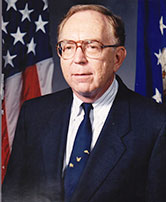HOME | FAMILY | CONDUCTING | SINGING | USU | STEINER | STANFORD | PHOTOS
26th AMENDMENT SIGNING | MEMORIES | YOUTUBE VIDEOS
Amazing Stanford Colleagues
One of the greatest joys of being associated with Stanford University was that I found myself surrounded by amazing colleagues. I have written about Nobel Laureates in a previous post in my discussion of how I was introduced to the computer. Stanford affiliates have been awarded 58 Nobel prizes.
In addition, in my own Music Department, there are two colleagues who have made contributions to the field which are primary.
John Chowning
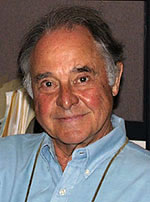
Dr. Chowning is the co-holder of the most lucrative patent Stanford University co-owned (previously this was the Stanford-Benet IQ test.) Dr. Chowning is the inventor of Frequency Modulation technology - the discovery of which has made virtually all electronic musical instruments possible. In addition, John is a well-respected and published composer and innovator in the field of electronic music, having inspired numerous composers, inventors, students and colleagues to further his creative endeavors. John has always remained a humble and caring human being and has assisted hundreds in their pursuits of musical and technological creativity. When I was contemplating retiring from Stanford, John Chowning wrote, "Bill is an extremely gifted musician whose intellect and boundless energy have made both the undergraduate and graduate choral and conducting programs at Stanford an unqualified success. Of all the graduate programs in music history and performance, Bill's has been the most successful over the years." John is a dear friend and colleague.
Leland Smith
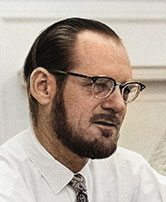
I have already mentioned Leland Smith in a previous posting. As a co-founder of the Stanford Center for Computer Research in Music (CCRMA)—one of the foremost centers for computer music and related research, bassoonist, innovator, and creator of the first computer-based notation system widely used by major publishers worldwide, Leland has revolutionized musical notational systems while inspiring thousands of forward-thinking musicians world wide.
A pioneering composer and computer programmer, Leland has been widely credited with leading music publishing into the digital age.
Condoleezza Rice
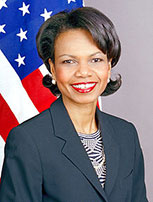
When we moved to the Stanford campus, and after our 4-years as Resident Fellows at Florence Moore Hall, we purchased a condo in the Peter Coutts complex. Our next-door neighbor, with whom we shared a common wall, was an outstanding professor named Condoleezza Rice. We often met at our mail boxes and exchanged greetings, but we both were very busy and had limited interaction until after she was appointed as Provost of Stanford University. One day she invited us to her condo for tea and we had a wonderful time discussing music (she had initially planned to become a professional musician and was an excellent pianist.) I had just submitted my retirement papers and Condi told me that, as Provost, her deepest fear was that excellent professors would make the decision to leave Stanford before she had the opportunity of exploring options with them. She was gracious and a wonderful neighbor who later became National Security Advisor and subsequently the United States Secretary of State.
Kenneth Arrow
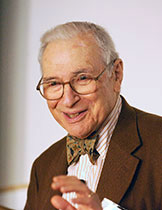
One of the tenors in the Stanford Chorale was a young man named Andrew Arrow. He was an excellent singer and became a very important soloist for the group. I, of course, had immediately recognized the name of "Arrow" because Ken Arrow, the economist, was one of the most visible of the Nobel Laureates from Stanford. Ken was not only known for his "Arrow's Impossibility Therom" his "General Equilibrium Theory" but also his outstanding students (five of whom have also been awarded the Nobel Prize.) He served on the staff of President John F. Kennedy's Council of Economic Advisers, and was awarded the National Medal of Science by President George W. Bush in 2006. He and his wife were friends and strong supporters of music. His son, Andy, has become a sought after actor and singer and is married to award winning actress, Donna Lynne Champlin.
Arthur Schawlow
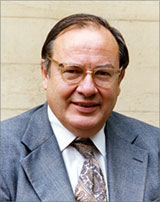
For his work in laser spectroscopy, Schawlow won the Nobel Prize in Physics in 1981. The Arthur Schawlow Prize presented by the American Physical Society recognizes contributions to basic research using lasers. He received numerous other awards for his work including the National Medal of Science, the Institute of Physics’ Young Medal and OSA’s Frederic Ives Medal. He was a member of the National Academy of Sciences.
From 1961 to 1991, Schawlow was a professor of physics at Stanford University and was chairman of the department of physics from 1966 to 1970. In 1978 he was appointed J.G. Jackson and C.J. Wood Professor of Physics. While at Stanford, Schawlow collaborated with Theodor Hänsch on laser cooling of atoms.
(CLICK HERE for personal reflections about Dr. Schawlow from my "computer" page.)
(CLICK HERE for a wonderful letter Dr. Schawlow wrote to me in 1988.)
Feigenbaum is a pioneer in the field of artificial intelligence and is often known as "the father of expert systems." He founded the Knowledge Systems Laboratory at Stanford University and is currently a professor emeritus of computer science there.
Feigenbaum joined the Stanford computer science faculty in 1965 as one of its founding members. That same year, he and Nobel laureate Joshua Lederberg started the DENDRAL project. Later joined by eminent chemist Carl Djerassi and others, this project produced the world's first expert system (1965-1982). DENDRAL's groundbreaking accomplishments inspired an evolution of expert systems, moving artificial intelligence out of the laboratory and into the structure of countless software applications. As important, it changed the framework of AI science: the power of an AI program came to be seen as largely in its knowledge base, not in its inference processes.
Over a career spanning the history of artificial intelligence, he has written and spoken extensively on artificial intelligence topics.
In 1994, Feigenbaum received the ACM Turing Award. From 1994 to 1997, he was Chief Scientist of the U.S. Air Force. He is a member of the National Academy of Engineering and the American Academy of Arts and Sciences.
(click here for personal reflections about Dr. Feigenbaum from my "computer" page)
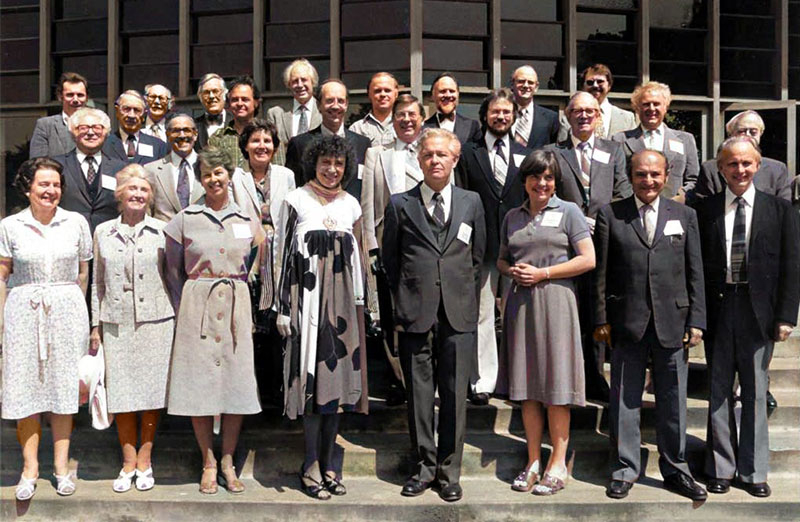
Stanford Music Faculty & Staff
Groundbreaking for New Music Building, April 30, 1982

